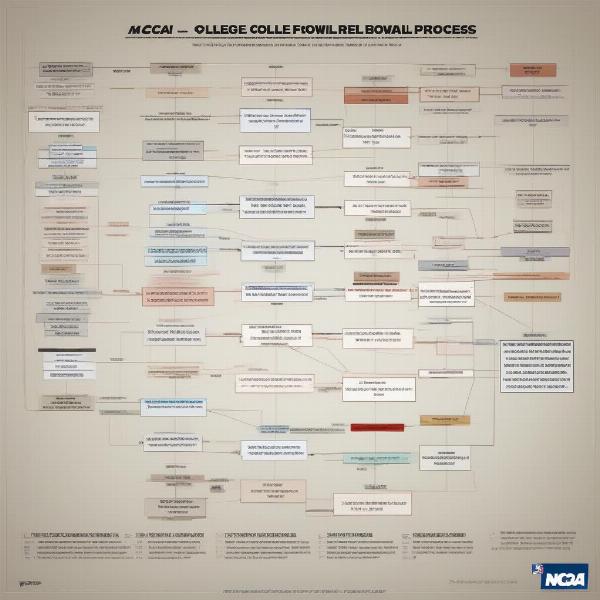The burning question on many college football fans’ minds, and a frequent topic at SupremeDuelist.blog, is: can a team with a losing record, specifically a 5-7 record, actually make it to a bowl game? It seems counterintuitive to reward a team that lost more games than it won, but the complex world of NCAA bowl eligibility sometimes throws us curveballs. This article breaks down the rules, the history, and the circumstances that can lead to this seemingly improbable scenario.
We’ll delve into the history of bowl game selection, explore the various factors that influence who gets an invitation, and examine how a 5-7 team can, under the right conditions, find itself playing in a postseason matchup. Our goal at SupremeDuelist.blog is to provide you with the most up-to-date and accurate information about college football, cutting through the noise to deliver a clear understanding of these complex rules.
The Basics of Bowl Eligibility: A Six-Win Requirement
Traditionally, to be eligible for a bowl game, a team must achieve a minimum of six wins in its regular season. This has been the standard for decades, ensuring that only winning teams get the opportunity to compete in the postseason. The reasoning is straightforward: bowl games are supposed to showcase the top performers of the year, recognizing their success. A .500 record, meaning at least 6-6, was historically seen as a fair indicator of a team’s quality. However, this standard has faced challenges in recent years due to the expansion of the number of bowl games.
But what happens when there aren’t enough six-win teams to fill all the bowl slots? This is where the possibility of a 5-7 team making a bowl game arises, creating a scenario that can be confusing and surprising to many. The increase in the number of bowl games over the years has led to the need for additional, less traditional methods of filling remaining spots. This is why understanding these exceptions is crucial.
The Academic Progress Rate: A Lifeline for 5-7 Teams
One of the major factors that can lead to a 5-7 team qualifying for a bowl game is the NCAA’s Academic Progress Rate (APR). The APR is a metric that tracks the academic performance of student-athletes. If the number of bowl-eligible teams (those with six or more wins) falls short of the number of available bowl slots, the remaining spots are filled based on APR scores. The teams with the highest APR among those who have at least five wins receive bowl invites until all spots are filled.
Essentially, a 5-7 team that boasts a strong academic record can get an opportunity that would otherwise be out of reach based solely on their on-field performance. This system aims to reward teams that prioritize the academic success of their student-athletes alongside athletic achievements. It highlights that the goal of college football is to develop the whole student, not just the athlete.
 ncaa football bowl selection process
ncaa football bowl selection process
Understanding the APR System
- The APR is a team-based metric, not individual.
- It considers eligibility, graduation, and retention of student-athletes.
- High APR scores often come from schools with strong academic support programs.
- A higher APR score effectively acts as a tiebreaker in bowl selection.
This academic performance measure acts as a safety net of sorts, ensuring that all bowl slots are filled and providing a unique opportunity for teams that might not have qualified based on their win-loss record. It’s a testament to the values of higher education within the structure of college athletics.
Why Are There So Many Bowl Games?
The increase in the number of bowl games is largely driven by financial incentives. These events are significant revenue generators, not just for the participating universities, but also for the local communities and television networks. The economic impact is substantial, making the creation of more bowl games a profitable endeavor. This has led to a situation where there are often more bowl slots available than there are teams with a winning record, which then creates openings for 5-7 teams.
The large number of bowl games also provides exposure for smaller programs, giving them a national platform that may not have been available otherwise. It also provides more opportunities for student-athletes to experience postseason competition, adding to their college memories. While the financial drivers are undeniable, these benefits also contribute to the continued expansion of the bowl system.
 college football bowl game locations
college football bowl game locations
The Impact of the Bowl System on College Football
- The bowl system creates substantial revenue for teams and local economies.
- It provides valuable exposure to smaller programs.
- It can motivate teams to improve their academic standards, knowing it matters for the bowl selection.
- It adds a layer of excitement and unpredictability to the end of the regular season.
“The APR tiebreaker is a clever way to ensure that academic standards are prioritized in college athletics,” says Dr. Emily Carter, a professor of sports management at the University of California, Los Angeles. “It’s not just about winning games on the field; it’s about ensuring that student-athletes succeed in the classroom as well.”
Has it Happened Before? Examples of 5-7 Teams in Bowls
Yes, 5-7 teams have indeed played in bowl games. In recent history, we’ve seen teams with losing records receive bowl invitations due to the combination of open slots and high APR scores. The 2016 season, for example, saw several 5-7 teams qualify for bowls, sparking much debate and discussion. These occurrences, while rare, do highlight the complexities of the system and the importance of both athletic and academic performance in determining postseason opportunities.
The inclusion of these teams sometimes leads to questions about the overall quality of bowl games. Some argue that it dilutes the significance of a bowl bid. However, supporters highlight the importance of rewarding programs that emphasize the academic success of their student-athletes, while others argue that the bowl games provide valuable experience to student athletes, regardless of the team’s record.
Real-World Examples of 5-7 Teams Making Bowls
- The 2016 season included multiple 5-7 teams playing in bowl games.
- These teams often had exceptional APR scores.
- Their participation led to interesting matchups and national exposure.
- They demonstrate that while winning is important, academics can provide another avenue for postseason participation.
“The bowl selection process is not simply about wins and losses,” explains Coach Michael Thompson, a former college football head coach. “The inclusion of 5-7 teams highlights the holistic approach to college athletics, where academic achievement is given its due recognition. It adds to the narrative and complexities of the game that fans love to explore.”
FAQs: Answering Your Burning Questions
Q: How often do 5-7 teams make bowl games?
A: It’s relatively rare, but it happens most seasons where there are not enough 6-win teams to fill all the bowl slots. It is not a regular occurrence.
Q: What happens if two 5-7 teams have the same APR?
A: Tiebreakers vary, but they can consider metrics like graduation rates or even the team’s winning percentage against teams who finished with a winning record. However, this is rare.
Q: Is it fair for 5-7 teams to play in bowl games?
A: It’s debatable. Some argue it dilutes the prestige of bowl games, while others support it because it highlights academic achievement alongside athletic performance.
Q: Does making a bowl game help a 5-7 team in the long run?
A: Yes, in many ways. It provides valuable experience for players, creates positive publicity, and can even help with recruiting.
Q: How can I find out my favorite team’s APR?
A: The NCAA website provides information on academic progress and APR scores for all universities.
Conclusion: An Unusual Path to Postseason Play
So, Can A 5-7 Team Make A Bowl Game? The answer, while counterintuitive, is yes, they can. It’s a testament to the complex nature of the NCAA bowl selection process. The combination of APR scores, the number of bowl games, and the varying levels of team success often converge to create unusual postseason scenarios. As we’ve explained at SupremeDuelist.blog, these situations highlight the importance of academic achievement alongside athletic success in college sports, creating a unique and interesting narrative for fans to follow. Keep an eye on the APR rankings, and you might just see a 5-7 team make a surprising bowl appearance. For the latest updates and analyses on all things college football, keep checking back at SupremeDuelist.blog. We’ll continue to provide you with the in-depth coverage and insightful analysis you’ve come to expect from us.
Leave a Reply